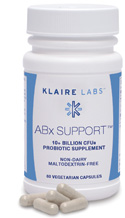As more adults and children in Maine become diagnosed with Lyme disease, the need for Lyme literate practitioners and reliable Lyme treatment strategies increases. This condition has increased dramatically in Maine over the past 2 decades, from 225 confirmed cases in 2004 to 1127 confirmed cases in 2013. Lyme is much more than a tick bite.
 Background: Lyme disease is the name for a collection of bacterial infections transmitted by a tick bite. The primary infection is from spirochete bacteria called Borrelia burgdorferi. Secondary infections can be from a number of different bacteria also present in the infecting host. These infections may be diagnosed quickly after a tick bite from a presenting rash, or they may be diagnosed later as a result of a clinical diagnosis from a Lyme literate practitioner, sometimes despite a negative test.
Background: Lyme disease is the name for a collection of bacterial infections transmitted by a tick bite. The primary infection is from spirochete bacteria called Borrelia burgdorferi. Secondary infections can be from a number of different bacteria also present in the infecting host. These infections may be diagnosed quickly after a tick bite from a presenting rash, or they may be diagnosed later as a result of a clinical diagnosis from a Lyme literate practitioner, sometimes despite a negative test.
Testing: Lyme disease testing and diagnosis is still medically challenging. There are many false negatives with Lyme blood tests as the bacteria involved are able to hide from the immune system in multiple ways: either intracellularly, within the Central Nervous System (CNS), and/or within biofilms. Furthermore, many patients who have had Lyme related infections for many years have had their immune systems broken down by the presence of these invasive bacteria, and may be unable to create a proper immune antibody response required for a positive test. Better testing methods need to be developed. For these reasons, many Lyme practitioners diagnose and treat Lyme when a number of common symptoms are present even when the blood tests are negative for the Borrelia burgdorferi bacteria. Igenex is the most commonly used laboratory for a complete Lyme and coinfection panel.
Biofilm: Biofilms were first identified as plaque on teeth. They are a city-like slime matrix of sugars, bacteria, viruses, fungi, minerals, heavy metals, alginate, extracellular DNA, plus the Lyme spirochetes. Unfortunately, B. burgdorferi are able to maintain a diversity of bacterial forms within this biofilm matrix including cyst, granular, L-form and spiral form which further protects the bacteria from antibiotic attack. Biofilms store energy and protect the microbacterial colony from the immune system and from antibiotic therapy. It also allows the bacteria to form drug resistance within only a few generations as the Lyme bacteria communicate and reproduce within its shelter.
Lyme and Antibiotics: The accepted standard of care is 2 – 6 weeks of 200mg doxycycline twice per day. One camp of Lyme doctors believe 2 weeks is adequate treatment, and another believe 4-6 weeks is required. The difference in treatment duration reflects the two different theories of Lyme infection. The former believes that Lyme is an acute, limited infection curable with antibiotics and without long term consequences. This perspective of Lyme treatment sees the long term issues faced by some Lyme sufferers as a post-infectious uncontrolled autoimmune response. The latter sees Lyme disease as a long–lasting bacterial infection, requiring a minimum of 4 weeks initial therapy. This perspective views the ongoing symptoms such as joint pain, fatigue, neurological disorders and brain fog as the result of the bacteria itself. Chronic systemic inflammation occurs for affected individuals regardless of seemingly conflicted understandings of Lyme disease.
Long-term antibiotic therapy use is effective at killing off systemic bacteria, but not at eliminating those hiding in the biofilm. Antibiotic therapy may also trigger/stimulate the bacteria to create biofilm colonies. Many people feel better during antibiotic therapy; it is very common for the unrelenting fatigue of Lyme Disease to lift during a course of treatment as the bacterial burden is decreased. However, symptoms slowly return as the spirochetes re-emerge from their biofilm colonies.
This cycle of medication remission and relapse can continue for years; unfortunately, the digestive system and microbiome will eventually falter from ongoin g antibiotic therapy resulting in multiple other health concerns. Supplementing with high quality, high potency dairy free probiotics throughout and beyond antibiotic therapy is foundational for maintaining gut health integrity for all Lyme patients. Including fermented foods daily such as kimchi, pickles, sauerkraut, organic plain yogurt, miso and drinks like kombucha and kefir will also support microbial balance and offset negative medication side effects. Botanical antibacterials and antifungals are also used in many Integrative Medicine treatment protocols to continue bacterial eradication and immune system support while avoiding some of the harsh side effects of conventional medical treatments. Herbs and other Integrative Medicine treatments are most effective when prescribed by a licensed prescriber who is able to treat with individualized medicine.
g antibiotic therapy resulting in multiple other health concerns. Supplementing with high quality, high potency dairy free probiotics throughout and beyond antibiotic therapy is foundational for maintaining gut health integrity for all Lyme patients. Including fermented foods daily such as kimchi, pickles, sauerkraut, organic plain yogurt, miso and drinks like kombucha and kefir will also support microbial balance and offset negative medication side effects. Botanical antibacterials and antifungals are also used in many Integrative Medicine treatment protocols to continue bacterial eradication and immune system support while avoiding some of the harsh side effects of conventional medical treatments. Herbs and other Integrative Medicine treatments are most effective when prescribed by a licensed prescriber who is able to treat with individualized medicine.
New antibiotics known as bismuth-thiols are in clinical trials for broad spectrum treatment of biofilms and antibiotic resistant bacteria. These are antibacterial agents with anti-biofilm activity that are being studied in relation to many severe infections. The bismuth component is bacteriocidal while the thiol enhances uptake at the bacterial surface. These new drugs also appear to work synergistically with current medications for improved effectiveness. This new generation of antibiotics may be key in eradicating Lyme Disease for future generations.
Conclusion: Lyme is a complicated condition to identify, diagnose, and treat. But it is here with a vengeance and affecting more and more families every year. Prevention and early detection is important. Recognizing that this is often a clinical diagnosis and understanding the complex remit/relapse cycle are important steps in managing care. There are many Lyme literate practitioners in Maine and New England that have extensive training in cutting edge antibiotics as well as time-honored traditions of medicine to support the many complications and side effects associated with this often debilitating condition.
References:
“Lyme Disease Treament: Two Standards of Care” Lyme Disease. org 2015 http://www.lymedisease.org/lyme-basics/lyme-disease/treatment/ Accessed 10 May 2015
Janossy, Thomas “Biofilm in Lyme, Autism, Alzheimers and Dementia” radix.com 2015 http://oradix.com/pages/Biofilm-in-Lyme,-Autism,-Alzheimer%27s-and-Dementia.html Accessed June 10 2015
Lee, Greg. “How to Prevent Recurring Lyme Disease by Cutting through the Biofilm.” n.d. Goodbye Lyme.comhttp://goodbyelyme.com/free_articles/biofilm/prevent_lyme_biofilm_fatigue Accesed June 10 2015
“Evidence Assessments and Guideline Reccomendations in Lyme Disease” International Lyme and Associated Diseases Society 2014 http://www.ilads.org/lyme/treatment-guideline.php Accessed June 10 2015
“Lyme Disease” Infectious Diseases Society of America 2015 http://www.idsociety.org/Lyme/ Accessed June 10 2015
Domenico, Philip et al. “Activities of Bismuth Thiols against Staphylococci and Staphylococcal Biofilms.” Antimicrobial Agents and Chemotherapy 45.5 (2001): 1417–1421. PMC. Web. 10 June 2015. http://www.jlindquist.net/generalmicro/102usage.htmlhttp://www.ncbi.nlm.nih.gov/pmc/articles/PMC90482/
“Reported cases of Lyme Disease by State or Locality” Centers for Disease Control and Prevention 2015 http://www.cdc.gov/lyme/stats/chartstables/reportedcases_statelocality.html Accessed June 24 2015


